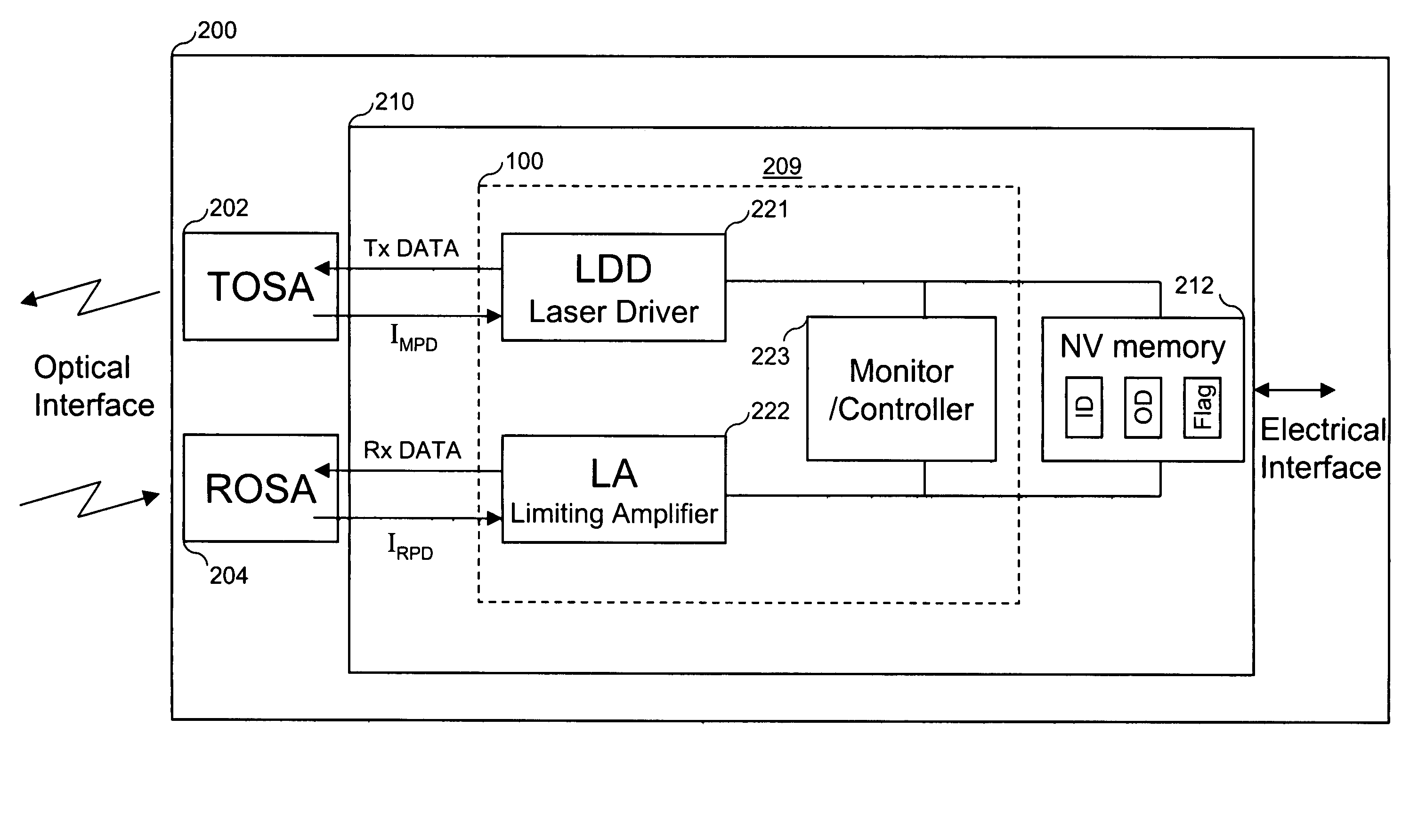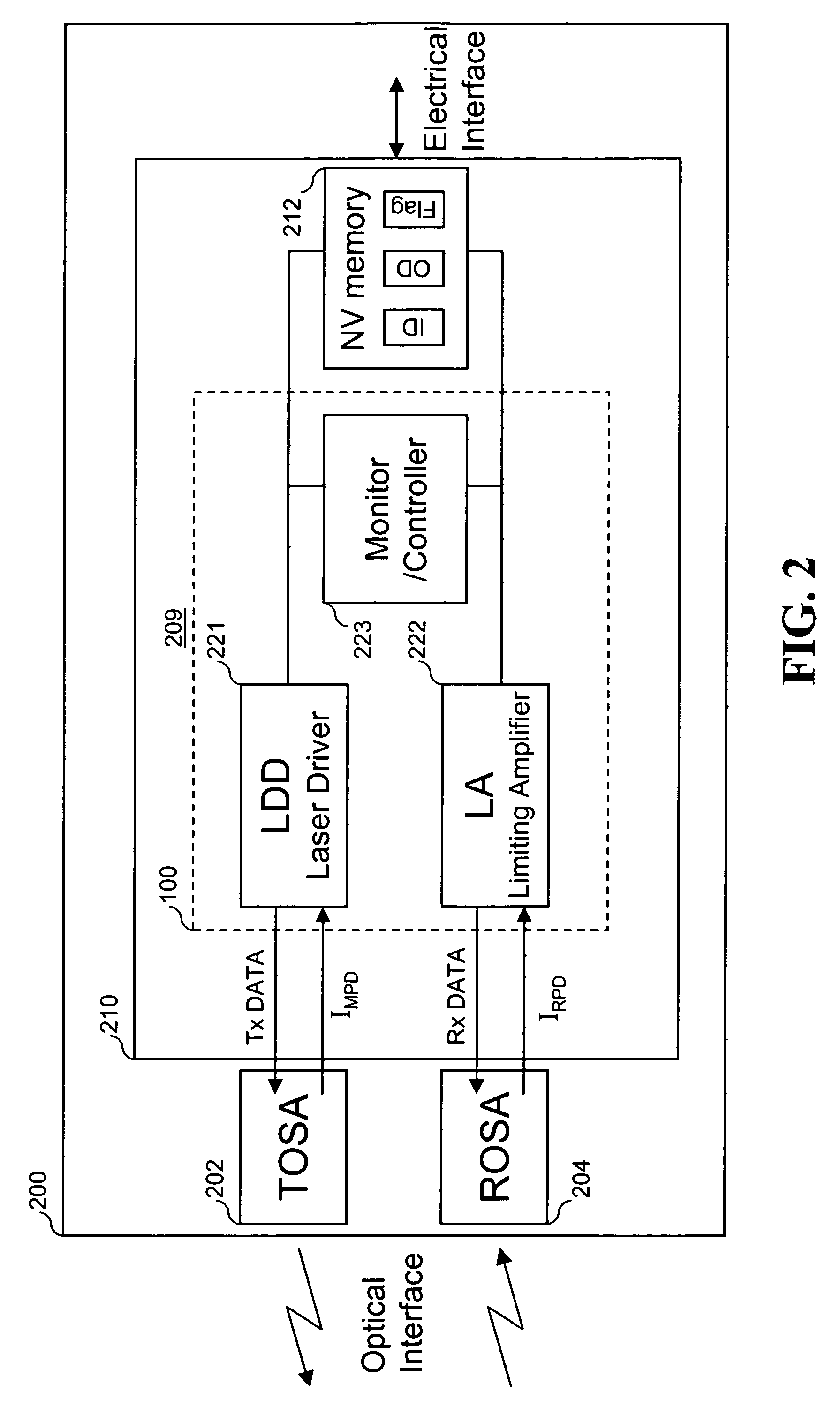Integrated driving, receiving, controlling, and monitoring for optical transceivers
a technology of optical transceivers and integrated drives, which is applied in the direction of electromagnetic transmission, electromagnetic transceivers, electrical apparatus, etc., can solve the problems of increasing increasing the cost of optical transceivers and the requirement for pcb area, and reducing the size of optical transceivers
- Summary
- Abstract
- Description
- Claims
- Application Information
AI Technical Summary
Benefits of technology
Problems solved by technology
Method used
Image
Examples
Embodiment Construction
[0035]In the following detailed description of the invention, numerous specific details are set forth in order to provide a thorough understanding of the invention. However, one skilled in the art would recognize that the invention may be practiced without these specific details. In other instances well known methods, procedures, components, and circuits have not been described in detail so as not to unnecessarily obscure aspects of the invention.
[0036]There is a continuous push in the industry for higher integration, denser port counts, lower power consumption, and lower component cost. It is therefore the purpose of this invention to integrate the typical separate integrated circuit chips, such as the laser driver, limiting amplifier and micro-controller, into a single integrated circuit chip to simplify the design and manufacturing, and thus reduce the cost of the optical transceivers. It is further the purpose of this invention to reduce the power consumption of the optical tran...
PUM
 Login to View More
Login to View More Abstract
Description
Claims
Application Information
 Login to View More
Login to View More - R&D
- Intellectual Property
- Life Sciences
- Materials
- Tech Scout
- Unparalleled Data Quality
- Higher Quality Content
- 60% Fewer Hallucinations
Browse by: Latest US Patents, China's latest patents, Technical Efficacy Thesaurus, Application Domain, Technology Topic, Popular Technical Reports.
© 2025 PatSnap. All rights reserved.Legal|Privacy policy|Modern Slavery Act Transparency Statement|Sitemap|About US| Contact US: help@patsnap.com



